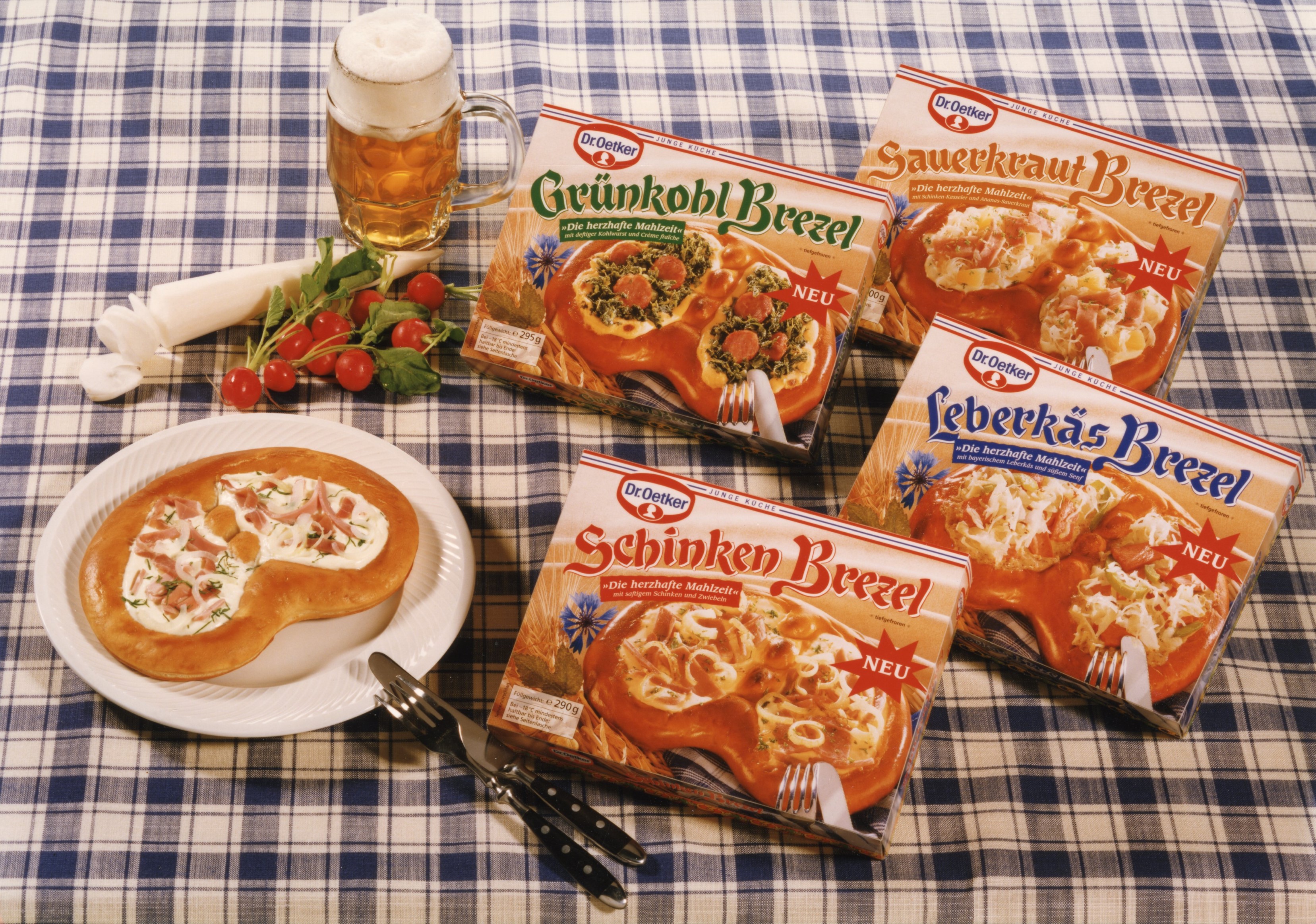Dr. Oetker Stories
Extraordinary products of the past
Nowadays, most people associate Dr. Oetker with pudding, pizza or baking mixes. But in the long history of the company, there have always been products that were unusual for the brand with the bright head.

29.5.2024 • History
Whether in times of shortage after the world wars or out of a love of experimentation: In its company history, Dr. Oetker has always had products and assortments that seem unusual to us today. In their time, however, they made perfect sense and were sometimes more, sometimes less successful. What follows, is a little journey through time through the history of forgotten and bizarre Dr. Oetker products.
Meat Juice (1906)
Bottle and outer carton of Dr. Oetker meat juice from a price list from 1907.
So-called meat extract, which was industrially produced, had already been established since the middle of the 19th century. This makes it one of the first ready meals in history for the mass market. The meat and the broth obtained from it were repeatedly boiled down to such an extent that a high concentration of ingredients and flavors was achieved. This process was particularly useful for meat from South America. Before the invention of reefer ships, it could not be exported across the Atlantic to Europe any other way.
Dr. Oetker also offered such an extract from 1906 onwards, and a strong broth could quickly be made from "Dr. Oetker's Meat Juice". The product was marketed primarily as a strengthening food for the sick. One bottle was enough for 20 portions of broth. Presumably, the product was available until 1914.
Salt (1915)
Dr. Oetker Salt with included salt shaker.
One of the most strange products in Dr. Oetker's history was simply salt. The so-called "Three Crowns Table Salt" was available from 1915 to the early 1920s. The matching salt shaker was also available. It was used in particular in the catering industry.
Tea Substitute (1919)
The strikingly designed packaging of the first and only Dr. Oetker tea in Germany.
After the end of World War One in 1918, the supply situation was tense. Food manufacturers had to think of ways to continue production. This also marked the beginning of a phase at Dr. Oetker in which entirely new product ranges were tested. Among other things, the company developed a tea substitute in 1919. It is no longer possible to reconstruct exactly what it consisted of, but it can be assumed that it was mainly easily available commodities that were used. The product disappeared from the market again in the early 1920s.
By the way, Dr. Oetker still offers real tea in Brazil today. More on Dr. Oetker in Brazil.
Frozen juice concentrate (1974)
Dr. Oetker Frozen Juice Concentrate from Florida was available from 1974 to 1984.
In the 1970s, Dr. Oetker was already established as a permanent fixture in the German frozen food market. In addition to a large, wide-ranging range of products for all tastes, the division was characterized above all by its innovations. From 1974 onwards, Dr. Oetker introduced a completely new product category: fruit juice concentrate, but frozen.
The juice came from the sun-drenched American state of Florida. There, the fruits were processed directly into concentrate and frozen for further transport to Europe. By adding water consumers could quickly make their favorite juice at home, which tasted just like freshly squeezed. One can of concentrate produced four to five liters of finished juice.
Dr. Oetker not only advertised the taste and quality properties of the concentrate, but also its practicality. The small cans took up less space and could be transported more easily than the glass bottles that were common at the time. The frozen juice concentrates in the orange and grapefruit varieties existed until 1984.
Mr. Shake (1988)
Mr. Shake, a typical product of the 1980s.
The 1980s were a special decade. Songs that are still popular today, extroverted fashion trends and technical innovations shaped this time. Dr. Oetker also came up with a lot of ideas to offer consumers something new.
With Mr. Shake, a delicious milkshake could be mixed in no time at all. The market launch was accompanied by an extensive advertising campaign. The product was available until 1990.
Happy Pretzels (1996)
There was something for (almost) every taste.
If there is one baked good that most Germans can probably agree on, it is the pretzel. It has been part of the country's regional baking culture for centuries. In 1996, Dr. Oetker introduced a frozen product that was unique in the market to date: The pretzels with a savory topping as a full-fledged meal for all tastes.
For example, there was a Bavarian meatloaf variant with a sweet mustard sauce. The "sauerkraut pretzel" was topped with pineapple sauerkraut and a special smoked pork, called “Kasseler”. On the "ham pretzel" were ham strips and onions. There was a special version for the Northern Germans too: The iconic "kale pretzel" had a topping of crème fraîche, kale and cabbage sausage. Incidentally, there was no vegetarian option at that time. The pretzels were available until 1998.
More insights into the history of our products
Product history: More than 130 years of joy in the making
Over 130 Years of Dr. Oetker Recipes
The History of Baking
For more information please contact:
Claus-Carsten Andresen
Media Spokesperson History & Archive